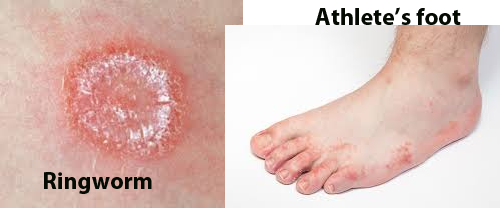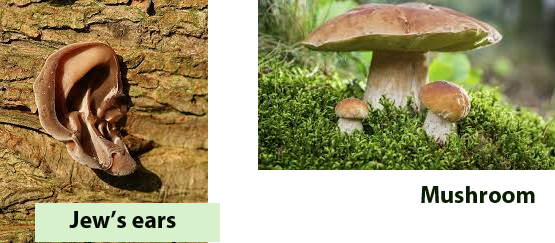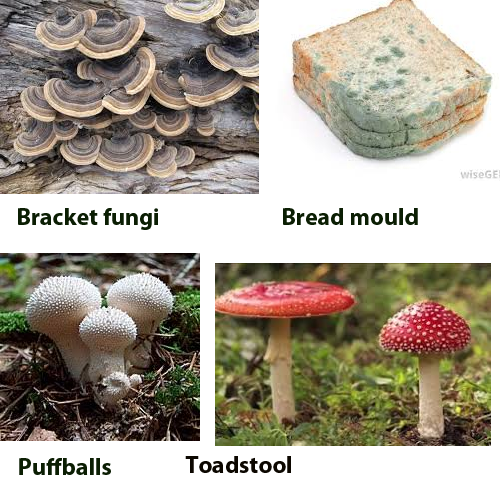Introduction to fungi
Fungi is a group of living thing. Unlike plants, they cannot make food. They also cannot move around like animals.
Since they are lliving thing, they have the feature of living things:
- Need air, food and water to survive.
- Grow.
- Move at a stationary position
- Response to change around them.
- Reproduce
- Die
They come in many different shapes, colour and sizes. You can find them in many places e.g. garden, forest, animal, etc. Since they cannot make their own food, they feed on dead or living plants and animals.
They are reproduced by spores. Spores are very tiny substances that look like brown dust. They are very light and can be carried by wind.
Fungus are usually found in places where there are presence of air, warmth and moisture (wet).
In the mushroom, the spores are found in the gills. In a bread mould, the spores are contained in spore cases which are found at the end of the stalks.
Benefit of fungi to human
- Help to break down dead organisation into simple substances so that they can decay faster and returned to soil as nutrients.
- Yeast, which is a fungi, used to make bread, beer and wine.
- Pencillin is a drug made from fungi to fight diseases such as sore throat, ear infection and diarrhoea.
Fungi can be harmful as well. They cause diseases such as ringworm and 'athlete's foot'. Some fungi can cause fruits to rot. It also cause some damages to the building by gorwing on wood and damp bricks.

Some fungi can be eaten (edible) , example are Jew's ear and some mushrooms.

Below are the fungi cannot be eaten (inedible)

Bacteria is very tiny living thing and can only be seen using microscope. They are also called microbes.
Some of the example of barteria:
- amoba
- alga
- bacterium
- euglena
- paramecium
- yeast
They can live in air, soil and water, as well as the bodies of animals and plants. Good bacteria help in digestion in the small intestine. Bad bacteria can cause diseases such as diarrhoea and tuberculosis, and they also cause food to decay.
|

